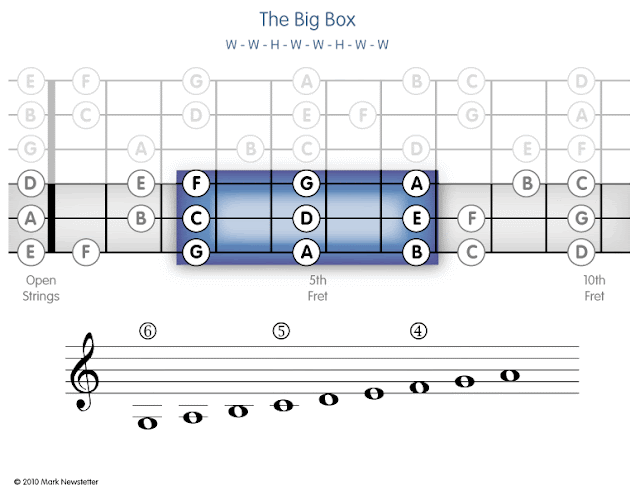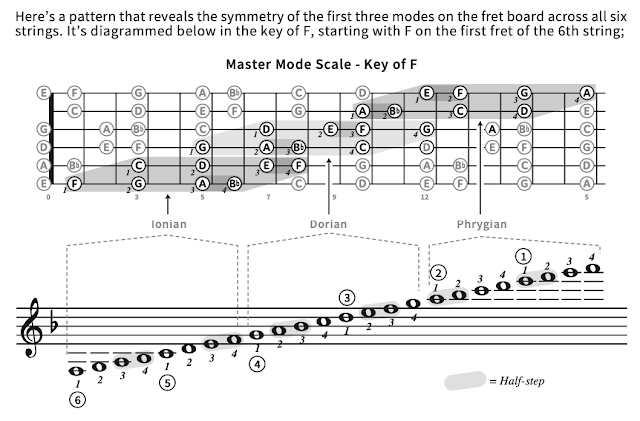When the pitches of two musical lines move in opposite directions their movement is said to be contrary. On the guitar can be difficult to play two separate lines, let alone have them go in opposite directions. But developing this technique can really enhance your playing.
Here is a pattern which is based on ascending and descending lines played in an alternating sequence, moving further apart as you go along;
Here's the notation for the pattern;
Here is a pattern which is based on ascending and descending lines played in an alternating sequence, moving further apart as you go along;
Follow the fingering carefully, play the pattern legato with no gaps between the notes. Notice that the first five measures are contained within a five-fret span. It is possible to simultaneously finger both notes in each of these measures. In the 6th measure, it will be very difficult to reach from the low E to the high C. If you can't connect them, get as close as you can. When you've played the pattern as written, try reading (and playing) it in reverse.
All contents of this blog are © Mark Newstetter




















